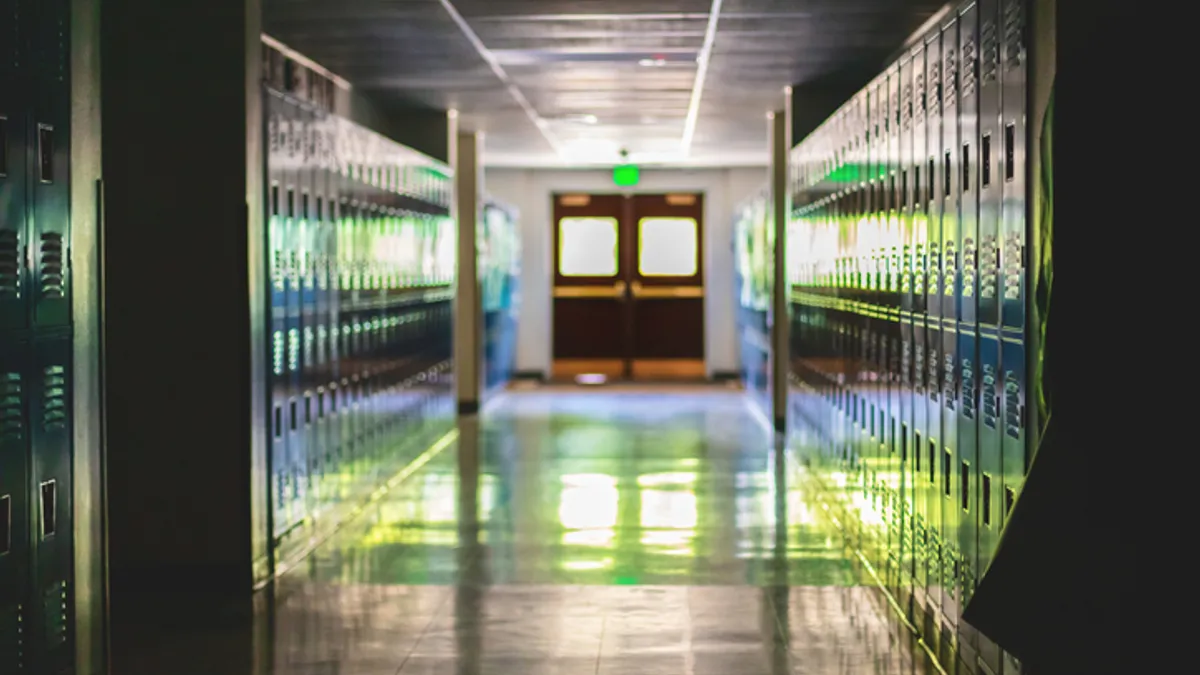A Florida school district has agreed to assess its use of restraint on a monthly basis, along with making other improvements, after an investigation by the U.S. Department of Education's Office for Civil Rights found "very high" rates of restraint for students with disabilities in the St. Johns County School District, OCR announced Monday.
The investigation, opened in 2019, showed one student was restrained 126 times over 2017-18 and 2018-19, the two school years OCR reviewed. In just the 2018-19 school year, the district restrained 153 students a total 1,711 times, according to OCR. In one incident, a student was restrained for nearly six hours.
The incidents of restraint in 2018-19 occurred across 23 of the district's 40 schools. But most of the students who were restrained (76%) attended one of six schools, and staff at those schools executed 95% of the restraints districtwide. Five of those schools were elementary schools with self-contained classrooms for students whose disabilities impacted their behaviors.
OCR's investigation revealed concerns about the provision of a free, appropriate public education, or FAPE, under Section 504 of the Rehabilitation Act of 1973 and Title II of the Americans with Disabilities Act of 1990. However, St. Johns "drastically reduced" its use of restraint through a different response method in emergency situations during the course of OCR's investigation.
The district also "has clear and detailed policies prohibiting the use of seclusion and limiting restraint to emergency situations only," OCR said.
“St. Johns County School District has committed to steps necessary to ensure protection of civil rights for students with disabilities when the district subjects them to restraint and to necessary corrective action for those students whom the district restrained in the past,” said Catherine Lhamon, assistant secretary for civil rights, in a statement.
The agreement between the district and OCR, which resolves the federal agency's compliance review, includes commitments from St. Johns to:
- Bring in individualized education program or Section 504 teams to determine if current interventions and supports are sufficient for the students who were restrained during the 2017-18 and 2018-19 school years, whether changes are needed, and if the students should receive compensatory services for denial of a FAPE or other instructional services missed because of restraint.
- During the monitoring period, which will last for at least the 2024-25 school year, review all incidents involving the restraint of students to determine if the actions were consistent with district procedures, written instructions, and related training.
- Conduct training for teachers, administrators and any staff who work with students who may be restrained or are certified to restrain students.
- Develop protocols for special education record keeping and accurate reporting.
Denise Marshall, CEO of the Council of Parent Attorneys and Advocates, a disability rights nonprofit, said in an email that the organization appreciates OCR "continuing to hold school districts accountable for actions that harm and abuse children with disabilities."
COPAA has been a supporter of the Keeping All Students Safe Act, proposed federal legislation that would prohibit student seclusion and limit restraint.
During the 2020-21 school year, when many schools were operating in remote or hybrid modes due to the COVID-19 pandemic, 28,390 students with disabilities were restrained at school, according to OCR's Civil Rights Data Collection. During the 2017-18 school year, there were 57,191 students who were restrained.
Nationally, 162 K-12 restraint and seclusion disability discrimination cases were pending before OCR as of Monday, according to a list the office posts on its website.














